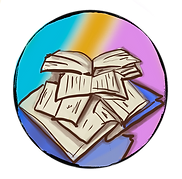Now don’t be too jealous. I’m writing to you from a balcony overlooking a Spanish port, freshly retired from the warm July day, with a coffee sat to my right (for those caffeine-inclined) and my current book (As It Seems by Eric Lewis) just out of reach on my left. Creates a near-perfect environment for writing and releasing some of that creative energy right? Well, I say near-perfect but I’m just missing one indomitable tool – WiFi.  To make it clear, I wouldn’t categorise myself as someone who relies upon a working internet connection to function, I just consider it a useful device for writing. For instance, what if I need to do some research, or I need check a dictionary to make sure I’m using the word indomitable correctly in the third sentence, or send a draft of this to a friend so they can tell me I’m missing the point of the article (I’m getting there). This doesn’t just apply to my scenario but that of many others; anyone from a fisherman without a hook to Captain Hook without his…well you get the idea.
To make it clear, I wouldn’t categorise myself as someone who relies upon a working internet connection to function, I just consider it a useful device for writing. For instance, what if I need to do some research, or I need check a dictionary to make sure I’m using the word indomitable correctly in the third sentence, or send a draft of this to a friend so they can tell me I’m missing the point of the article (I’m getting there). This doesn’t just apply to my scenario but that of many others; anyone from a fisherman without a hook to Captain Hook without his…well you get the idea.
The same can be said for authors in the self-published community (see I said we’d get there). For indie authors, the journey to publishing a novel can be more than just visiting a coffee shop armed with the latest MacBook Pro and hammering away for a couple of days, but could include a series of tools which can all help to achieve different outcomes.
The first of these could be used before our impassioned writer even reaches his local caffeine dealer; researching popular writing tools. Common examples of tools include Grammarly for checking those pesky grammar mistakes, Wavemaker to help tidy messy writing and Aeon Timeline which is designed for crafting and helping with plot structures. The key with using writing tools like these, is that they are optional. Without referring to AI integrations, these tools can be used to broaden, narrow or shape writing subject to the authors decisions rather than determine their writing. Used in moderation, tools like these can help writers reach their story-telling potential.
Adding the full-stop on the concluding chapter, our author-to-be might suddenly realise they’ve forgotten that they will need to deliver the story in some way from their computer into readers hands. Fortunately, there are a number of platforms they can use to help them publish. Amazon’s Kindle Direct Publishing (KDP) is used by over 1 million authors to help them reach the biggest e-book market worldwide. Free to use, KDP allows authors to publish directly to e-books or printed e-books. With royalties available on books sold this can be an affordable route for authors looking to self-publish. Other platforms are available such as PublishDrive and IngramSpark.
Self-publishing tools are integral in post-publishing stages too. In a very unashamed plug, Your Paper Quest supports writers to submit stories to feature in an indie book subscription. This can be considered a great platform for authors to build an audience and showcase their work. Another example of this is Uprival which invites people to be ambassadors of your content in a way to network towards new audiences. Along with the many other tools available, understanding just how and where to market your book can be just as important as the writing itself.
There’s lots I have failed to mention and there are many more tools available for each of these steps (such as Kobo), and between them too (such as Drip or Mailchimp; email marketing platforms), which can encourage more authors to consider self-publishing in comparison to traditional methods. And this number of creative voices is only going to grow as these tools develop further to provide more nuanced support. The only question for our tireless author and their overheating laptop to consider is whether they want to use them.

